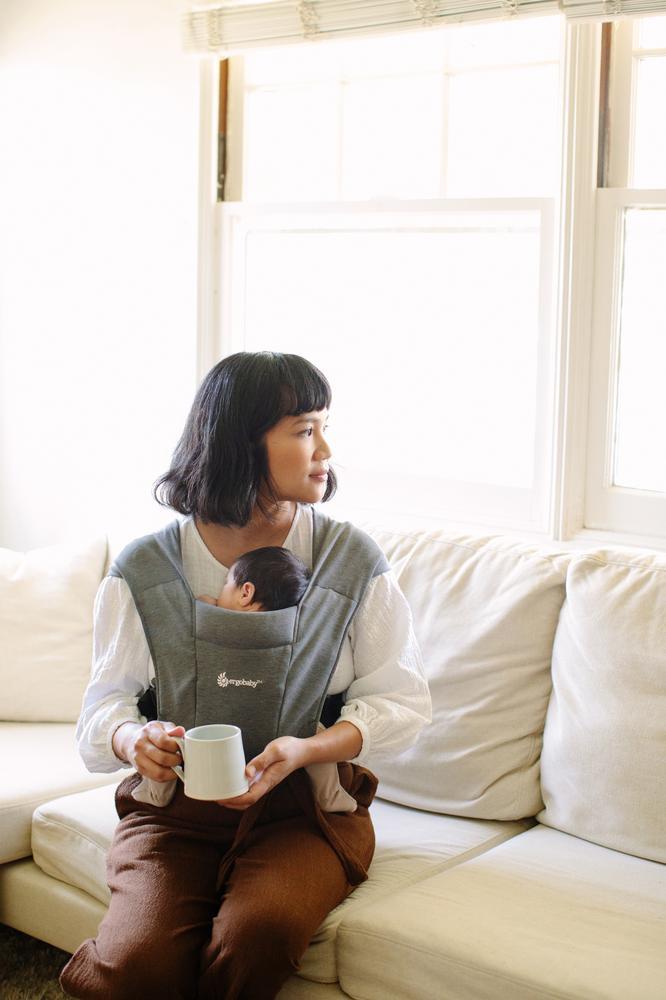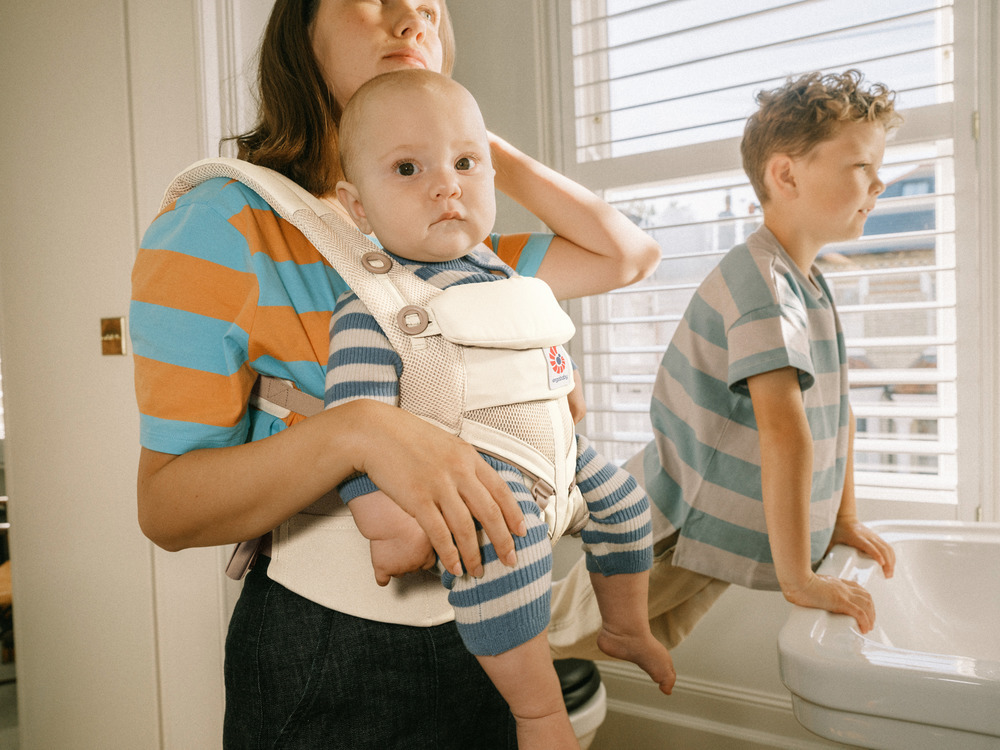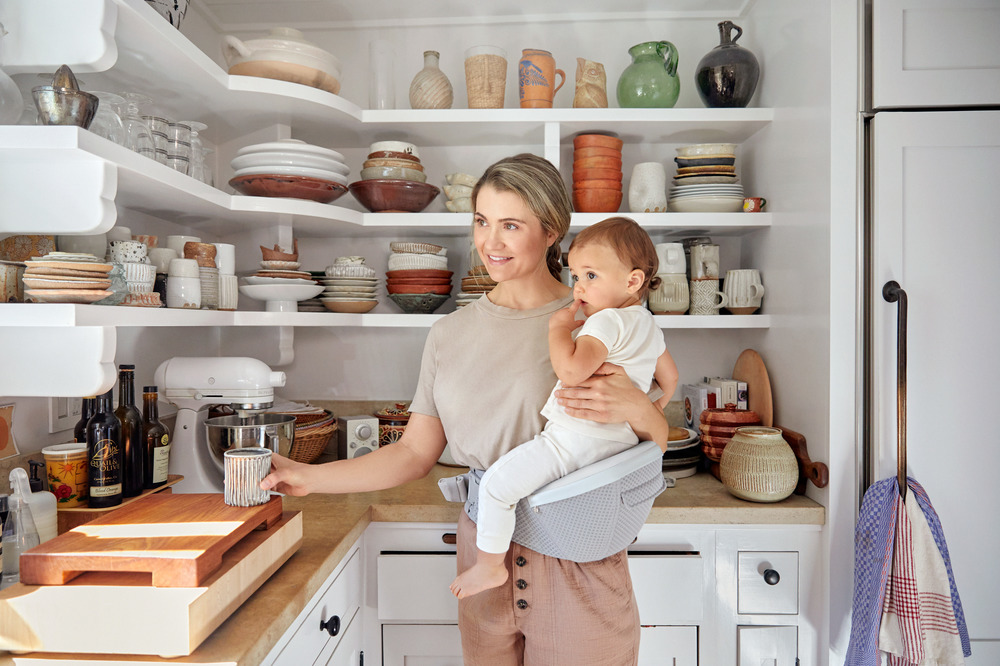Babywearing is one of the most rewarding parts of early parenting - providing closeness, comfort and convenience all in one. But as your baby grows and their needs evolve, so should the way you carry them. With Ergobaby carriers, you can transition between front, hip, and back carries to match your baby’s development and your lifestyle.
So, when should you make the switch? And how do you know which carry position is best?
Let’s break it down by age, developmental milestones and practical tips for making each position safe and comfortable for both of you.

Front Carry (Facing In)
Best for newborns up to around 6 months+
This is the first and most nurturing babywearing position - perfect for bonding, breastfeeding and supporting baby's neck and spine
Use it when:
-
Your baby is a newborn (minimum 3.2kg)
-
They can’t yet support their own head
-
You want maximum closeness and easy monitoring
-
You're breastfeeding on the go (Ergobaby carriers make it easy!)
How to:
-
Use the Embrace Newborn Carrier or Omni Deluxe in inward-facing mode
-
Ensure baby is seated in the "M" position with knees higher than their bum
-
Baby’s head should be close enough to kiss, with airway clear at all times

Front Carry (Facing Out)
Best from around 5-6 months onwards
Once your little one has strong head and neck control and is curious about the world, the front carry (facing out) can give them a better view while staying close to you.
Use it when:
-
Baby has full head and neck control (usually around 5-6 months)
-
They can sit in the carrier without slumping forward
-
They want to explore the world from a secure place
Important: Only use the facing-out position in short intervals and when baby is alert - not sleepy. Always watch for signs of overstimulation.
How to:
-
Adjust your Omni or Aerloom carrier to the facing-out setting
-
Ensure the panel is low enough to keep baby’s chin above the edge

Hip Carry
Best from around 6 months to toddlerhood
Hip carry is a natural way to hold a baby - especially when they’re on your hip all day anyway! It’s perfect for babies who like to see what you’re doing but still want some cuddles.
Use it when:
-
Baby is at least 6 months old and has good torso control
-
You need a flexible carry position for around-the-house tasks
-
You're transitioning between front and back carry
How to:
-
Use the Omni or Alta carrier with hip carry settings
-
Position baby high and snug on your hip, making sure weight is well balanced across your shoulders and back

Back Carry
Best from around 6+ months and up
The back carry is a lifesaver for active parents - great for hikes, cooking and toddlers who still want to be carried but are too heavy for the front.
Use it when:
-
Baby is at least 6 months and can sit unassisted
-
You need your front free for movement or chores
-
Baby wants to nap while you're on the move
How to:
-
Use your Omni, Alta, or Aerloom carrier in back-carry mode.
-
Gently rotate baby to your back using the “hip scoot” method or ask for help if unsure.
Tip: Practice over a soft surface or with help the first few times!
When to Switch Between Positions
| Babywearing Position | When to Start | When to Transition |
|---|---|---|
| Front Carry (Facing In) | From birth (3.2kg+) | Once baby has head/neck control |
| Front Carry (Facing Out) | ~5-6 months | When baby can sit upright with good head support |
| Hip Carry | ~6 months | As an alternative for curious or clingy toddlers |
| Back Carry | ~6+ months | When baby outgrows front carry comfort or for longer outings |
Ergobaby Carriers That Support Multiple Positions
Looking for a carrier that adapts with you and your growing baby? These Ergobaby models offer multi-position versatility:
-
Omni – 4-in-1: inward, outward, hip, and back carry
-
Alta – 3-in-1: inward, hip, and back carry
-
Embrace – Ideal for newborns with inward-facing support
-
Aerloom – Lightweight and breathable with multiple carry positions
The beauty of babywearing lies in its flexibility. Whether you’re soothing a newborn, chasing a toddler, or adventuring as a family, Ergobaby carriers are designed to grow with you - offering ergonomic support, comfort, and connection every step of the way.
So don’t be afraid to switch it up! Follow your baby’s cues, choose the right position for the moment, and enjoy the freedom that comes with hands-free parenting.
Need help choosing the right carrier or position?
Visit Ergobaby New Zealand for expert guides, video tutorials and the full range of award-winning carriers trusted by families!















Front, Hip or Back? When and How to Change Babywearing Positions